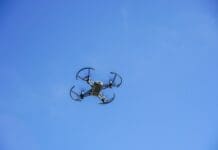This post is also available in:
 עברית (Hebrew)
עברית (Hebrew)
A growing controversy has emerged over the New Orleans Police Department’s use of facial recognition technology, following revelations that officers secretly leveraged live surveillance feeds to track and arrest suspects in real time—potentially in violation of local regulations.
According to an investigation by The Washington Post, law enforcement officials in the city accessed a privately operated network of over 200 facial recognition-enabled cameras. These systems reportedly sent automated alerts to officers’ phones when a possible match for a suspect was detected, allowing them to act swiftly without following official approval procedures.
Facial recognition software is commonly used in law enforcement for identifying individuals from static images, typically when investigating violent crimes. However, the deployment of this technology for real-time surveillance of public spaces, without proper oversight or transparency, raises significant legal and ethical questions.
A city ordinance passed in 2022 strictly limited police use of facial recognition tools. Under the guidelines, officers were only allowed to use the technology for identifying suspects in investigations related to violent offenses. Moreover, any images had to be processed through a designated “fusion center,” where trained analysts were required to confirm the identification before police could take action.
Contrary to these rules, the Post’s report claims that the surveillance network was used to assist in dozens of arrests—many of which were not disclosed in mandatory police reports. Notably, at least four individuals were detained in connection with nonviolent offenses, raising concerns that the technology was being used outside its legal scope.
The lack of transparency appears to stem from frustrations within the department, as some officers reportedly viewed the mandated approval process as too slow. As a result, they bypassed the required oversight mechanisms in order to act more rapidly on leads generated by facial recognition alerts.
The findings have prompted renewed calls for stricter enforcement of surveillance laws and clearer accountability. Critics warn that unchecked use of such advanced tools—especially when combined with real-time monitoring—could lead to civil liberties violations, wrongful arrests, and erosion of public trust in law enforcement.


























